How Many Areca Palm Varieties Can You Recognize?

Areca palm is one of the most tolerant plants for both indoor and outdoor. You can plant all areca palm tree varieties in the North, West, or the East in an outdoor arrangement.
We do not recommend planting the different types of areca palm in the South direction as the sun may burn the leaves during the peak afternoon hours. However, if you have no option but to place your areca palm varieties in the South direction, you can remove them from direct sun at least from 12 pm-4 pm when the sun is at its sharpest.
Alternatively, you can either shelter your variety of areca palms behind the tall trees or use a screen to reduce the impact of the sun.
Jump To
- What Is The Common Name Of Areca Palm?
- How Do You Identify An Areca Palm?
- Is Bamboo Palm and Areca Palm The Same?
- Types of The Areca Palm
- How Tall Do Areca Palms Get?
- Benefits of Areca Palm
- Frequently Asked Questions
On the other hand, regardless of your chosen types of areca plants, you can also grow them indoors in an area where you can provide the plant with the right growing conditions.
Typically, regardless of the areca palm tree varieties, they grow well in extremely bright sunlight. This is because areca palms enjoy the sun for a few hours every day. Also, if you are growing your areca palm varieties indoors, please ensure that the space is very well-ventilated.
What Is The Common Name Of Areca Palm?
Previously referred to as the Chrysalidocarpus lutescens, and botanically known as the Dypsis lutescens, the Areca Palm is also referred to by various other names, such as Butterfly Palm, Bamboo Palm, Golden Butterfly Palm, Cane Palm, Yellow Palm, and Golden Feather Palm.
How Do You Identify An Areca Palm?

There are so many types of areca plants that it might often be challenging for you to know whether you own areca or not. It is also because several young palms have a more or less similar appearance.
Hence, in the first look, you may be deceived into believing that your palm is actually areca or vice versa. It is only if you know the rules of examination and identification that you can establish whether you own any areca palm varieties or just any other palm.
Below, we will discuss some rules of identification.
- Look at the plant as closely as areca palms have upright symmetric leaves floating above the plant.
- Look at the leaflets. All types of areca palms leaflets are supposed to be 1 ½ in width to 2 feet long. Their leaves have rich green color on both sides.
- If the plant has a cluster of stems in yellow-green color, it has to be an areca palm.
- With 6-10 inches annual growth areca palm tree varieties indoor can outgrow the pot in a few years itself.
Is Bamboo Palm And Areca Palm The Same?
Yes, both areca palm and bamboo palms are the same. It is so-called because it also has a low light tolerance and soft fronds, just like bamboo. Moreover, most areca palm varieties have a golden or yellowish-green trunk, resembling bamboo clumps. Its fronds are full and narrow and look quite like bamboo leaves. This is why the areca palm is also called the bamboo palm.
Related: How fast do Mexican, European, Pygmy, Areca, and Ponytail Palm Grow?
Different Types Of Areca Palm
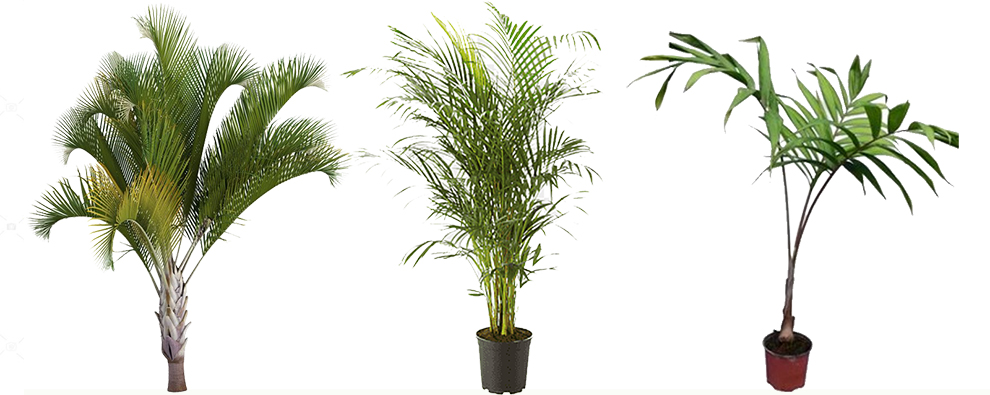
There are several different areca palm tree varieties. Below, we will address a few of the notable types of areca plants. So let us get started and address these types of areca palms one by one.
1. Dypsis Decaryi
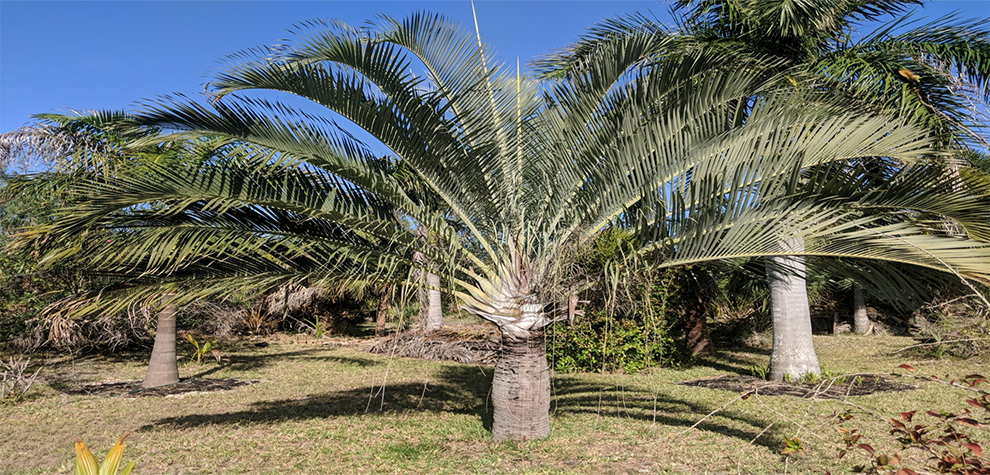
The palm is native to Madagascar. This is an incredibly famous kind of areca palm and is gorgeous. It is a small to mid-sized palm that has one trunk with a three-ranked crown of keeled, feather, bluish-green leaves nestled on the top.
It is commonly referred to as the Triangle palm, given its triangular-shaped leaves, developing from three different points wherein the fronds emerge.
2. Dypsis Baronii
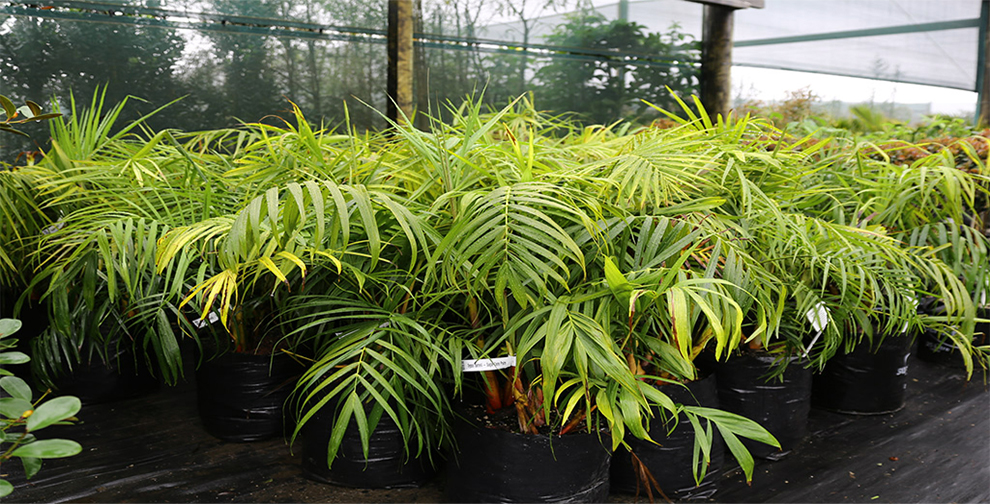
These areca palm tree varieties are suitable for smaller gardens. However, you can also include them in a space with many large palms, as these smaller palms will add more character to the field.
It is a slow-growing palm and can be potted in a container with well-drained soil. Such varieties are mainly grown indoors, but they enjoy partial shade to full sun.
Keep this palm away from strong winds, which can badly damage the fronds. Its fronds are giant but delicate. The palm will grow about two meters wide and three meters tall.
3. Dypsis Utilis
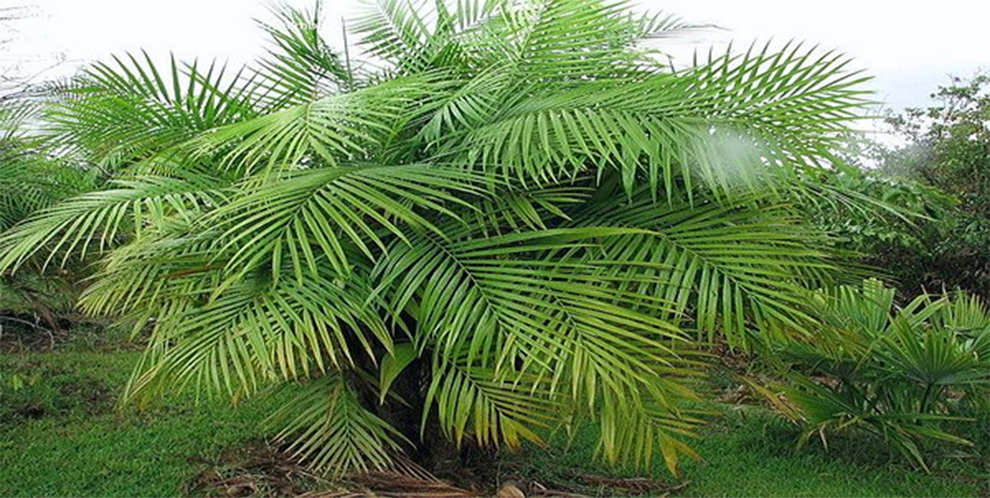
This is one of the evergreen Areca palm varieties and can grow up to 15-meters tall. The clumping palm can yield multiple stems. In contrast to most other types of areca plants, this one can produce three side shoots, which parallelly grow vertically with the primary stem.
Every stem has large leaves nestling it like a crown. It is a hugely beneficial variety with several uses and health benefits, and the palm is harvested for medicine, as a fiber source, and food. It is also a widely popular variety amongst collectors.
4. Dypsis Prestoniana
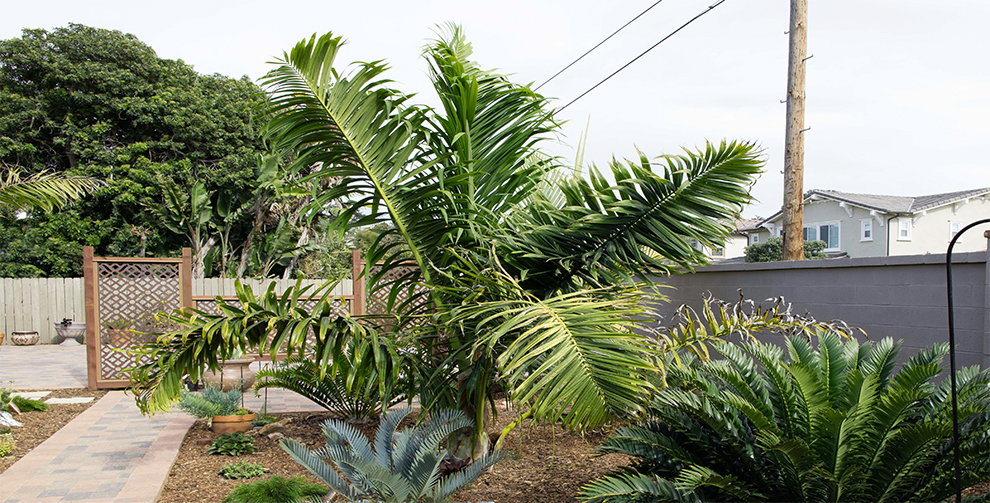
It is a giant, attractive palm, not commonly seen everywhere. You will majorly spot it in the South-eastern and Eastern Madagascar. The temperature there is ideal for the palm to grow well.
The plant majorly grows at mid-elevation in moist forests. This palm yields a ringed, stout trunk to 16 inches in diameter and about 40 feet tall.
The leaves are white at the base and do not resemble any crownshaft, which is common with most other palms. The palm grows best in the warm temperate and tropical regions.
5. Dypsis Lanceolata
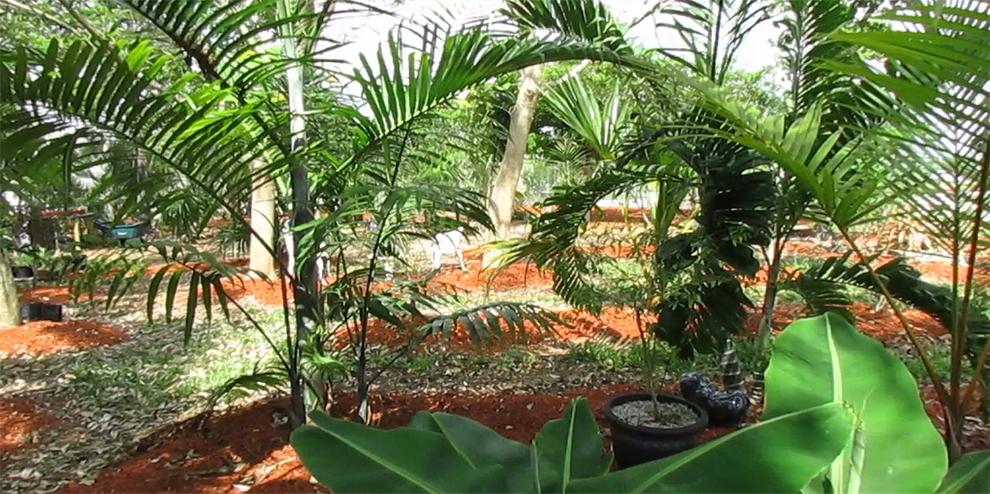
It is one of the little-known and rare areca palm varieties. The palm is native to the Comoro Islands and looks quite like the Dypsis cabadae but way more beautiful. People usually use it as an ornamental palm.
Further, it has unusually wide leaflets, and the palm grows to only 20-feet high in bunches. This can be a perfect addition to warm temperate or tropical gardens, which are not very massive in size.
Many people also love these types of areca plants as an indoor palm. Unfortunately, the palm does not do very well in a while, and survives typically in cultivation.
6. Dypsis Sp. ‘Orange Crush’
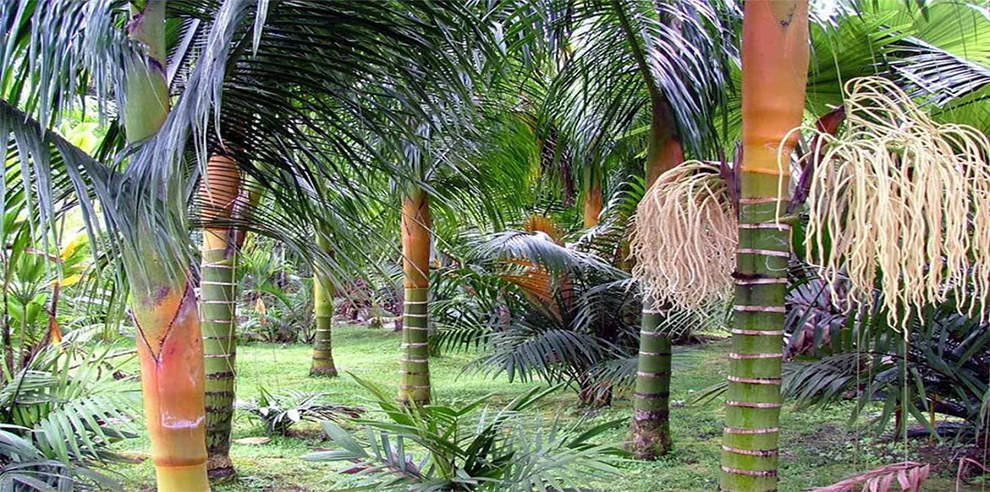
Previously known as Dypsis pilulifera, it now needs to be rechristened as it is pretty different from the Dypsis pilulifera.
It is a magnificent ornamental large palm with a bright, orange-hued crown shaft, coming to the forefront as the older leaves fall.
In addition, it is a cold-hardy palm and can thrive well in temperate climates.
7. Dypsis Sp. ‘Dark Mealy Bug’
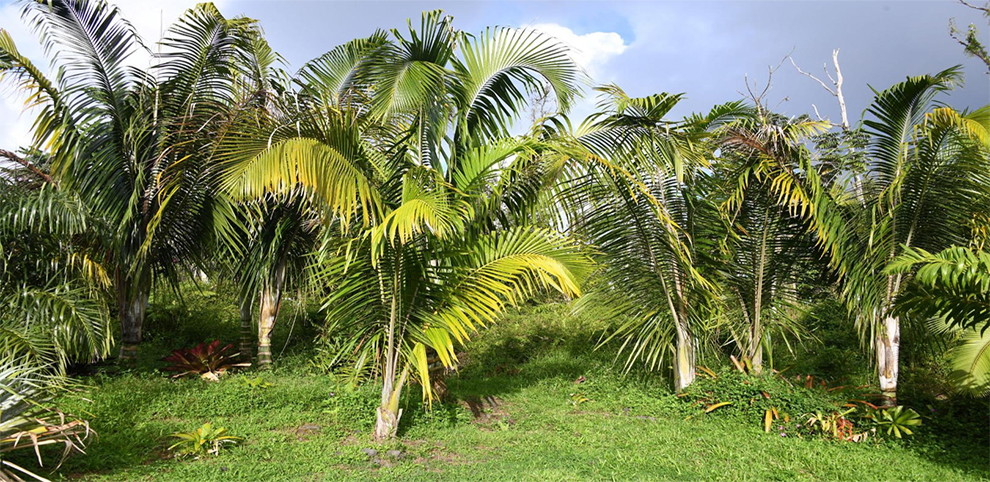
Now, we have arrived at the last Areca palm varieties on our list, the beautiful and alluring Dypsis sp. ‘Dark Mealy Bug.’ It is an uncommon and mysterious palm, typically found in the Masoala peninsula in north-eastern Madagascar.
Common to the lowland rainforests, it is a stunning and colorful palm with reddish-brown leaf mid-ribs with darkened markings.
Further, its pendulous leaflets, dark green leaves, and a white trunk and crown shaft only elevate its beauty.
So, these are all the different types of areca palms. Of course, this is an inclusive list, and they’re sure will be several other variants of the areca palm, which are not included here. However, we have tried to include the prominent ones you must know about.
How Tall Do Areca Palms Get?
Typically, most Areca palms will be between 10-30 feet tall and about 15-feet wide. Because of their forgiving, low-maintenance nature and tall stature, they have become so popular. Even though every variety of Areca palm is different, it will typically grow very tall.
Palm Tree: Care Guide, Outdoor Varieties, Growth Rate, Lifespan
Is Areca Palm Good For Home? (Benefits)
Areca palm has several benefits associated with them, making them a good home plant. Below, we will discuss a few of the most prevalent uses of Areca palms.
- They better the humidity in the air.
- They can lower your stress levels.
- They are low-maintenance.
- They reduce the pollutants in the air.
- They are non-toxic.
- They release more oxygen in your surroundings.
- They are a Feng Shui Plant.
- They elevate the visual appeal.
Related Care Guide: Majesty Palm, Date Palm, Ponytail Palm
Areca Palm Varieties: FAQs
Ques 1. Are areca palms high maintenance?
Ans. Areca Palms are one of the most low-maintenance plants. They need nothing more than well-draining soil and bright sunlight for at least 4-6 hours in a day.
Ques 2. Are areca palms expensive?
Ans. They can be pretty expensive if you shop for a full-grown areca palm. It is why people usually pick small tabletop arecas.
Ques 3. How do you distinguish between an areca palm and a parlor palm?
Ans. The difference between parlor palms and areca palms is primarily seen in their growth and size. Parlor palms are slow-growing palms with a stout stem cluster and grow vertically.
On the other hand, arecas are fast-growing and can quickly grow to eight-feet long. They need a lot of space.
Further, the parlor palms have smaller leaves, but the areca palm leaves are even smaller than that. Also, from the two, only the areca palm bears flowers. However, the parlor palm might also yield a flower, which is often yellowish-orange, but it won’t flower indoors.
In addition, the parlor palms are small and mature to three-eight feet. On the other hand, the areca palm varieties are tall and usually grow up to 20 feet. Many areca palms might even grow more elevated than that.
Ques 4. What is the difference between areca palm and majesty palm?
Ans. They are two very different palms, and the easiest way to discern one from the other is by observing its fronds. Majesty palms have sharp fronds, and the areca palms will have more droop and relaxed fronds.
Ques 5. What does the areca palm symbolize?
Ans. An areca palm is a symbol of all things positive. People think of it as a symbol of reward, honor, truth, freedom, triumph, victory, happy return from a journey, eternal life, and expansion.
Ques 6. Do areca palms attract rats?
Ans. Palms are the typical shelter homes for rats and rodents. So, yes, they do attract the rats, but you can eliminate them by eliminating their food source.
Related: Areca Palm Care Guide, How Fast Do Areca Palm Grow?
